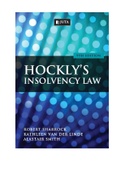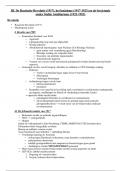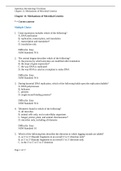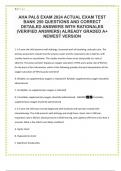Exam (elaborations)
NSG 533 ADVANCED PHARM EXAM 2 LATEST 2024 WITH COMPLETE SOLUTION/ADVANCED PHARMACOLOGY FINAL EXAM REVIEW(100% VERIFIED)
- Course
- Institution
NSG 533 ADVANCED PHARM EXAM 2 LATEST 2024 WITH COMPLETE SOLUTION/ADVANCED PHARMACOLOGY FINAL EXAM REVIEW(100% VERIFIED)
[Show more]









